As a final optional assignment, we were asked to envision what we think the future classroom will look like. It’s an interesting thought. With all the technological developments over the last decade, we future educators now have numerous tools at our disposal to make education more interactive and collaborative. My Ed-Tech class introduced us to a number of great tech implements: gaming, virtual reality (VR), augmented reality (AR), GIS,, etc. The question is, how do we best use these technologies and design a classroom to best prepare students for the future?
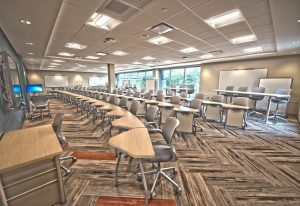
In considering technology in the classroom, I think it’s best to work backwards and consider exactly what skills students will be required to be adept at in the future. Jobs are going to change. AI and robotics will certainly change the landscape of labour. More than ever, rote memorization and recall of facts will not be the focus of education any more. Workers will be expected to be critical thinkers, collaborative, and above all, problem solvers. In light of this, we need to transform our classrooms into places of ‘real learning’. Here’s what I envision the future classroom to look like.

- The workplace will come directly into the classroom. Students will spend more time learning technical trades and practical skills. Many of these skills will likely be related to computers and robotics, and hands-on training from professionals in the field will help learners gain proficiency.
- As for classroom setup, each class will have a traditional learning space with desks arranged in pods for collaborative learning. Each desk will include a tablet or screen for each student. Teachers will deliver lectures via large interactive screens, and interactive whiteboards will allow student participation. Each classroom will also be equipped with a separate media centre where students can create and edit films (green screens and editing programs will be included), experiment with VR and AR technology, or use physical tools and technology to create projects.
- Outside the classroom, schools will not only have a traditional gymnasium, but also yoga, dance, and art studios where students can practice mindfulness and wellness techniques. There will also be library-like environments: quiet spaces with physical books, plants, comfortable chairs and natural light where students can simply read or study in peace.
- Students will have more choice. New curriculums will allow students to focus more on their future pursuits and less on skills they feel will not benefit them in the future. Assessment will largely be formative and a means of helping students become aware of their own learning, placing the teacher in a role of facilitator and giving the student more agency in their learning. In place of giving all students a basic understanding of all subjects, the future classroom will cater more to students’ unique and diverse skills, preparing them for a fulfilling career in their chosen fields.
This is a short video highlighting some of the possible developments in the future classroom. I like the integration of AR, while at the same time recognizing that traditional, direct education through lecture is not going to disappear. Basically, I see the future classroom as a much more balanced learning space, one that suits the needs of all learners and provides them with the environment they need to reach their potential. Technology is certainly a huge part of the future, but I truly believe that human interaction will remain the heart of learning, and that any technology introduced in the classroom should be aimed at inspiring human interaction, not the opposite.

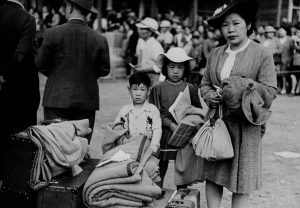

 I met with Chloe, the director of youth programs, and we talked a bit about the makeup of youth in the neighbourhood. She confirmed it was diverse, and that a number of their programs aim at integrating newly immigrated youth into Canadian culture. They hold regular nights for newcomer youth, but they often complain that they are not interacting enough with “Canadian” students. I asked what kind of projects might help bridge that gap and she immediately mentioned a mural project that students had collaborated on in the neighbourhood. Not only that, but the project was lead by my classmate and all-around talented artist in the Teacher Education program, Kay Gallivan.
I met with Chloe, the director of youth programs, and we talked a bit about the makeup of youth in the neighbourhood. She confirmed it was diverse, and that a number of their programs aim at integrating newly immigrated youth into Canadian culture. They hold regular nights for newcomer youth, but they often complain that they are not interacting enough with “Canadian” students. I asked what kind of projects might help bridge that gap and she immediately mentioned a mural project that students had collaborated on in the neighbourhood. Not only that, but the project was lead by my classmate and all-around talented artist in the Teacher Education program, Kay Gallivan.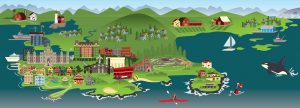
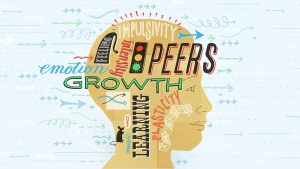 I really enjoyed our Educational Psychology course this semester. There were a number of takeaways from the class, like Piaget’s stages of cognitive development, that I found interesting and it was great when I actually witnessed the theory in action while observing classes at Belmont Secondary.
I really enjoyed our Educational Psychology course this semester. There were a number of takeaways from the class, like Piaget’s stages of cognitive development, that I found interesting and it was great when I actually witnessed the theory in action while observing classes at Belmont Secondary.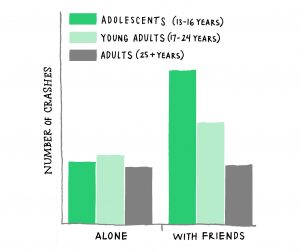 The first study involved having adolescents play a driving situation game in which they had to navigate a series of stoplights. When teens played alone, there was no difference in their performance in comparison to the adult control group. However, when their same-aged peers were allowed to observe the teens play, the adolescents were three times more likely to take risks resulting in crashes. The conclusion of the study was that “peer pressure emerges as a measurable biological phenomenon, crossing over into the perceptible world…”.
The first study involved having adolescents play a driving situation game in which they had to navigate a series of stoplights. When teens played alone, there was no difference in their performance in comparison to the adult control group. However, when their same-aged peers were allowed to observe the teens play, the adolescents were three times more likely to take risks resulting in crashes. The conclusion of the study was that “peer pressure emerges as a measurable biological phenomenon, crossing over into the perceptible world…”. After deciding to dig into the use of Virtual Reality (VR) in the language classroom for our Ed-tech inquiry project, I realized I hadn’t included one of the key sources for my interest in the topic.
After deciding to dig into the use of Virtual Reality (VR) in the language classroom for our Ed-tech inquiry project, I realized I hadn’t included one of the key sources for my interest in the topic. 

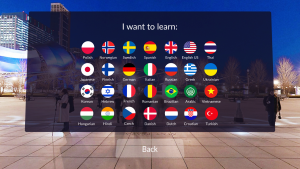

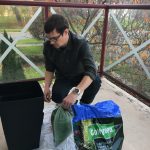





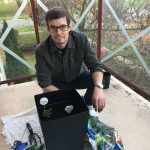
 camas. After a look around the store, I found camassia quamash (common camas) bulbs for sale, but decided to ask the staff in any case. Good thing I did. It turns out that common camas is more ornamental than edible. Also, I found out that growing camas from seeds takes upwards of 7 years! Bulbs it is. This might have been a dead end, but luckily the staff recommended an alternative,
camas. After a look around the store, I found camassia quamash (common camas) bulbs for sale, but decided to ask the staff in any case. Good thing I did. It turns out that common camas is more ornamental than edible. Also, I found out that growing camas from seeds takes upwards of 7 years! Bulbs it is. This might have been a dead end, but luckily the staff recommended an alternative, 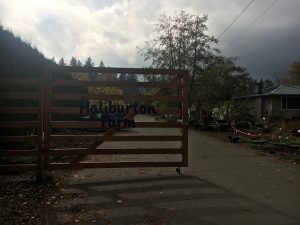
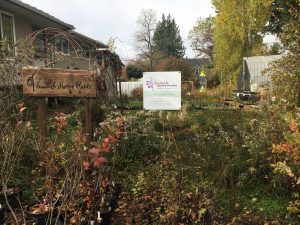
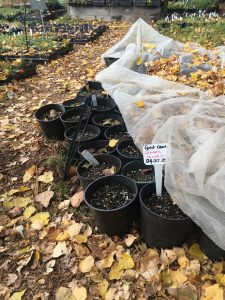
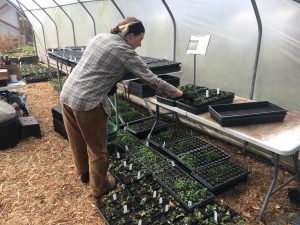

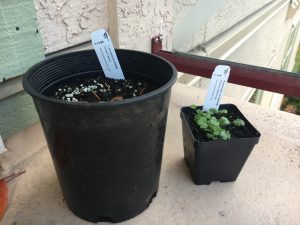
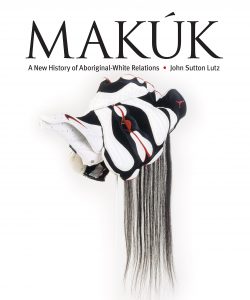 the inadvertent role camas played in the choosing of Victoria as the Hudson Bay Company’s headquarters. In his book, Lutz argues that while the Coast Salish peoples were though of as “salmon people”, they were actually “camas people” as the plant was the primary source of starch in their diet. Actually, the plant was cultivated in fields (by Indigenous women) and the land terraformed in many areas, including what is now downtown Victoria. According to common lore, these fields were what impressed James Douglas most about the site (reminded him of the fields of home) and so led to him choosing Victoria as the new HBC headquarters site. The irony of Douglas not realizing these fields were essentially well maintained gardens is one of those historical facts that makes you appreciate how random chance can have huge historical impacts.
the inadvertent role camas played in the choosing of Victoria as the Hudson Bay Company’s headquarters. In his book, Lutz argues that while the Coast Salish peoples were though of as “salmon people”, they were actually “camas people” as the plant was the primary source of starch in their diet. Actually, the plant was cultivated in fields (by Indigenous women) and the land terraformed in many areas, including what is now downtown Victoria. According to common lore, these fields were what impressed James Douglas most about the site (reminded him of the fields of home) and so led to him choosing Victoria as the new HBC headquarters site. The irony of Douglas not realizing these fields were essentially well maintained gardens is one of those historical facts that makes you appreciate how random chance can have huge historical impacts.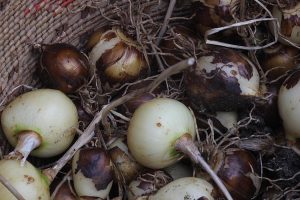 there are two main types of edible camassia: common camas and great camas
there are two main types of edible camassia: common camas and great camas
Recent Comments